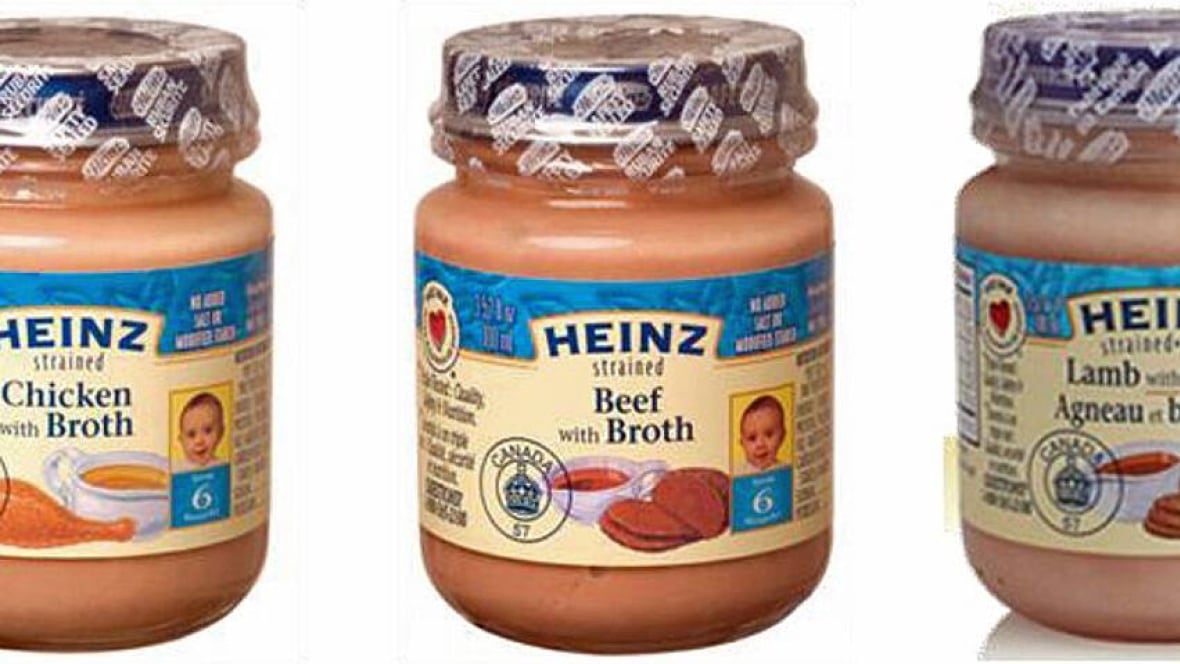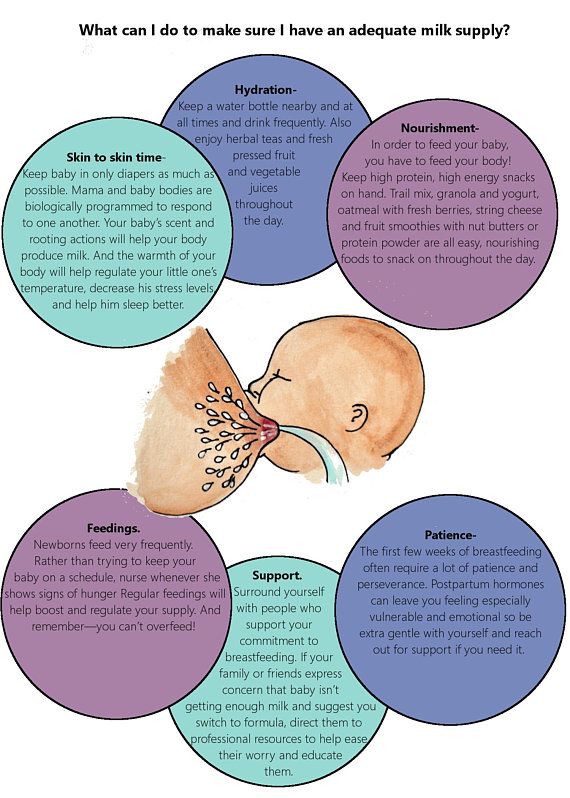What to feed baby oscars
What Should You Feed Baby Oscar Fish?
What do I feed baby Oscar Fish?
That’s the one question I’ve been getting after posting the following Instagram reel –
https://www.instagram.com/p/ChevQIep1Tb/?utm_source=ig_web_copy_link
what do You Feed Baby Oscar Fish?This video shows my oscars’ growth in the past 1 year. So, in this guide, I’ll share a list of food you should feed your baby oscar fish.
Here we go –
13 Foods I Recommended for your Baby Oscar Fish
Flakes and Pallets
Pellets What Do You Feed Baby Oscar Fish?Flakes and Pallets are the two best fish foods to start feeding your baby oscar fish. So, after setting up your new fish tank, you can start feeding flakes and pellets to your oscar fish.
Granules
Since pallets are hard to chiew for baby oscars, they tend to cause mouth deformation in a Juvy oscar of at least 3 inch.
So, if you notice any kind of deformation in your oscar’s jaw, you should stop feeding them pallets and replace them with something soft like granules in their diet.
Tubifex worms
Tubifex worms are a good food source for baby Oscar fish. They are high in protein and can be bought online or found in your backyard.
When you’re ready to feed them, just drop them into the tank with your baby Oscar fish, who will be more than happy to eat them up.
Earthworms
Earthworms are a great source of protein, and they also contain a lot of iron and of amino acids.
These nutrients are essential in helping your baby oscar fish grow properly.
Iron content present in earthworms helps the blood cells in your baby Oscar’s body do their job by delivering oxygen throughout his body.
Oscar Fish vs Red Devil Fish: Find the Most Suitable Pet Fish?
Blackworms
Blackworms – What Do You Feed Baby Oscar Fish?Blackworms are a great food to feed baby Oscar fish, especially when they’re first born. They’re small and easy for a baby Oscar to eat and provide the protein that young fish need.
Blackworms can be easily found in many pet stores, both online and offline pet stores.
If you want more than just one worm per feeding, try placing the blackworms into the water instead of on top of dry land.
Once Oscars have grown past their initial stages, however, there are other foods I recommend switching up with some other options.
Crickets
Crickets are also a high-protein food for your baby fish. This helps them develop properly and proliferate. Crickets also contain calcium, so they are suitable for developing their bones.
The fat content in crickets is minimal, so you don’t have to worry about your baby fish getting fat!
Crickets contain vitamin B12 and chitin, both of which are beneficial for their overall growth.
Mealworms
Mealworms for oscar fishIf you want your baby oscar fish to grow faster, you need to feed them a high-protein diet derived from carnivores’ food.
And mealworms for oscar fish are a great addition.
These types of food contain all the nutrients the Oscars need for their growth.
You can use frozen ones if you don’t want to feed your Oscar fish live worms or crickets.
However, ensure they are alive when feeding these diets because dead worms will not provide enough nutrition for your fish to grow properly!
The most nutritious way would be gradually introducing them onto chopped-up small pieces of dried shrimps first before adding flakes that contain various drinks such as krill, squid & clam, etc., followed by frozen, dried mealworms.
Peas and other chopped veggies
Peas – What Do You Feed Baby Oscar Fish?Peas are a great source of Vitamin C and plant protein. Therefore making it an excellent food for baby Oscar fish.
You can also mix peas with chopped veggies such as spinach, green beans, cucumber, and zucchini for a treat full of vitamins and minerals.
P.S. You can also use frozen chopped veggies for later use.
10 Super Expensive Fish for your Home Aquarium
Silkworm pupae
Silkworm pupae are the larvae of silkworms, a type of moth.
They are sold in a can and often look like tiny brown worms.
You can find them in both online and offline markets.
You can feed your fish one at a time or three at a time—either way is okay as long as you do not overfeed them.
Brine shrimp
Brine Shrimp – What Do You Feed Baby Oscar Fish?Brine shrimp are one of the best foods you can feed your baby Oscar fish. They are small, saltwater crustaceans that you can easily culture in your home aquarium.
Brine shrimp contain a lot of protein and are easy to feed your fish.
Fun Fact #1 – Some people also call these tiny creatures sea monkeys.
If you decide to feed brine shrimp to Oscar fish, remember that they will only be able to eat them if they’re less than twice their size.
Scallops
Scallops are also a good source of protein and contain vitamins and minerals such as vitamin B12, beta carotene (a form of vitamin A), niacin, selenium, zinc, folate, and iron.
Scallops have lots of calcium, so they make a good choice if you are trying to avoid high phosphorus levels in your tank.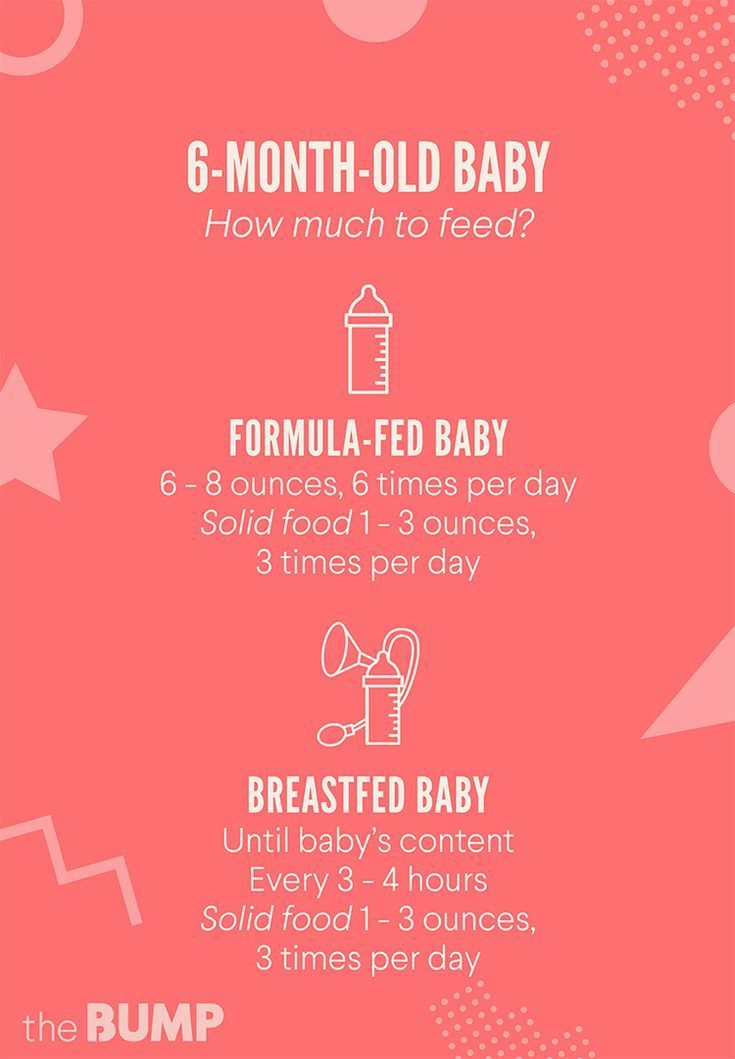
Krill
Krill – What Do You Feed Baby Oscar Fish?Krill is a good source of protein, which is excellent for baby Oscar fish. It’s also easy to feed and can be used to introduce your fish to new foods.
If you’re looking for something that sticks with Oscar’s natural diet and provides them with the necessary nutrients, krill is your best bet.
Nitrate Poisoning: How Long Does a GoldFish Take to Recover?
Chopped up Superworms
Chopped-up super worms are another great source of protein for your baby oscar fish.
They are also effortless to find and keep alive, so if you’re looking for an easy way to get more protein into your fish’s diet, this is it!
You can feed superworms to Oscars just as quickly as they can be fed to other types of fish. This makes them a versatile food source that works perfectly with any tank setup.
Once you’ve decided to feed your baby oscar fish with superworms, make sure to feed them in groups (but not too big for your oscar fish tank).
Pro Tip – Oscar fish are omnivorous, meaning they eat plant and animal matter. Generally, an all-plant diet is not healthy for the Oscars. However, you should still provide your fish some variety to keep them from getting bored of the same old food daily.
How much should you feed them?
Oscar fish have large stomachs compared to their bodies (which means they can hold more food!), but their jaws only open wide enough for about half an inch—so if you’re feeding them a piece of food bigger than this size, it won’t fit!
If yours does manage to swallow something too big for its mouth, don’t panic—it’ll just pass through on its own (and may even help clean out any parasites or bacteria in there).
Do Oscar Fish Have Teeth? Can They Be Used to Kill You?
Conclusion
I hope this article has given you some ideas for ‘What Should You Feed Your Baby Oscar Fish.’ If you have any more questions, don’t hesitate to reach us at [email protected].
Feeding Oscar Fish | Tropical Fish Hobbyist Magazine
Author: Brian M. Scott
Oscars Astronotus spp. are some of the most popular and commonly kept fish in the aquarium hobby. In this installment of “Top of the Food Chain” I will rediscover my roots, so to speak, and pass along some useful information that I have gathered on successfully maintaining oscars in home aquaria.
Introduction
Most hobbyists have at least heard of oscars at some point in their fishkeeping careers, and many have kept them in home aquariums. After all, who can resist those big bug eyes and that incredible dog-like personality? Well, not many, and rightfully so. Oscars are amazing fish and exhibit some of the most unique and fascinating behavioral and husbandry traits of any commonly available freshwater aquarium species. This month I’d like to focus on passing along snippets of information that I have gathered on the proper diet and feeding of oscars in aquariums. So let’s jump right in!
Diet in Nature
Oscars are native to tropical and subtropical South America.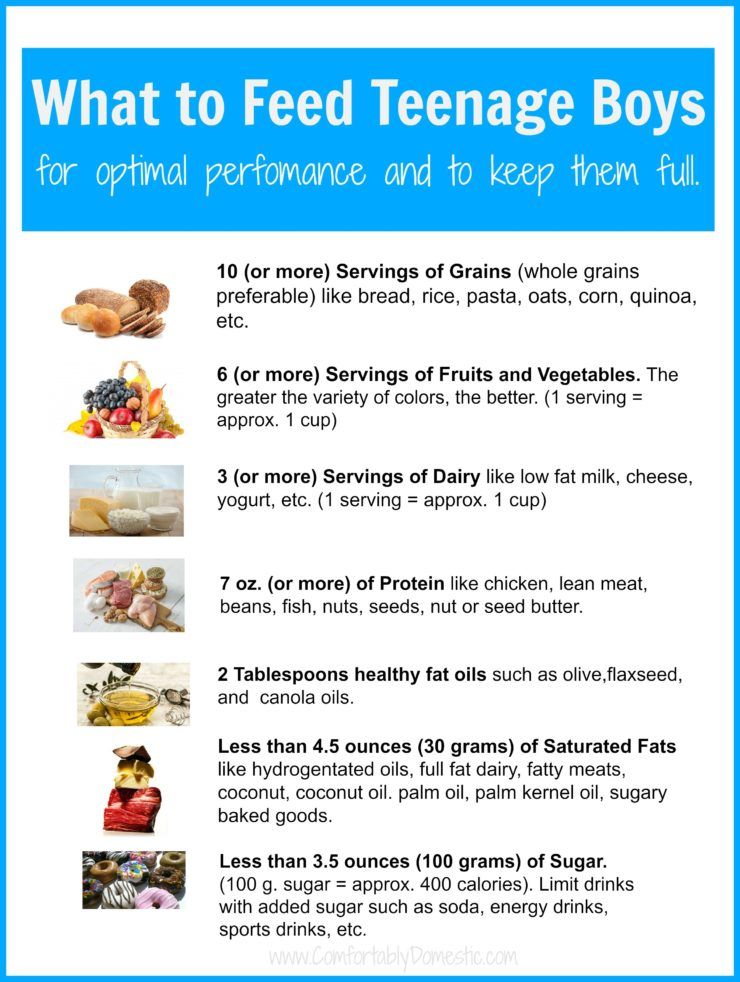 Throughout their range wild oscars primarily consume meaty foods (mostly small whole fishes), while much of the remainder of their diet consists of live insects and insect larvae. It’s hard to break down the actual percentages of food types consumed, but it’s probably safe to say that live fishes and insects constitute approximately 90 percent of the overall diet of wild oscars.
Throughout their range wild oscars primarily consume meaty foods (mostly small whole fishes), while much of the remainder of their diet consists of live insects and insect larvae. It’s hard to break down the actual percentages of food types consumed, but it’s probably safe to say that live fishes and insects constitute approximately 90 percent of the overall diet of wild oscars.
Even though live fishes and insects make up the bulk of a wild oscar’s diet, there are other items that are taken as well. Fruits, nuts, shrimps, and snails are noted fare, with the fruits and nuts being consumed somewhat on a seasonal basis. Additionally, some authors have reported oscars being sighted around dead animals lying in the water. It is uncertain, however, if these fish were feasting on the actual dead animal or on the small fishes that such carrion attracts. I would say the latter theory is more widely accepted.
Diet in Aquaria
The diet of oscars maintained in aquariums is often drastically different compared to that of their wild counterparts. What I mean by this is that it’s rather uncommon for hobbyists maintaining oscars to feed them a variety of foods so as to replicate food selection in nature. Generally the two major foods being offered to aquarium-housed oscars are live feeder fishes and pellets formulated for large aquarium fishes.
What I mean by this is that it’s rather uncommon for hobbyists maintaining oscars to feed them a variety of foods so as to replicate food selection in nature. Generally the two major foods being offered to aquarium-housed oscars are live feeder fishes and pellets formulated for large aquarium fishes.
It’s been my experience that oscars do best when offered a variety of foods, and while a diet that reflects that of a “natural” one is somewhat difficult for many hobbyists, it is extremely rewarding and surprisingly affordable to offer a diet that is at least close to that of a wild oscar.
Live Fishes
Many folks offer their oscars a diet made up almost exclusively of live feeder fishes. While live feeder fishes certainly do have their place on the menu for predatory fishes, they should never be the sole food offered unless such a diet is part of a larger goal (i.e., breeding, etc).
One of the biggest issues regarding the feeding of live fishes to any fish, oscars included, is the potential for disease transmission. Since many feeder fishes, especially goldfish, are raised in huge numbers by fish farmers, the risk of disease transmission is high. However, such a problem is less likely to occur these days compared to years past. The increased understanding of raising, transporting, and maintaining feeder fishes like goldfish and rosy red minnows has made them safer to use today than ever before. That said, I still do not advocate the use of live feeder fishes as an exclusive diet.
Since many feeder fishes, especially goldfish, are raised in huge numbers by fish farmers, the risk of disease transmission is high. However, such a problem is less likely to occur these days compared to years past. The increased understanding of raising, transporting, and maintaining feeder fishes like goldfish and rosy red minnows has made them safer to use today than ever before. That said, I still do not advocate the use of live feeder fishes as an exclusive diet.
Insects & Worms
During the rainy season, when fish are scattered throughout the flooded forest, oscars tend to shift their diet toward insects and insect larvae. I have found insects like small crickets and mealworms to be fantastic foods for oscars. Be careful not to use insects that have been exposed to chemicals like fertilizers or insecticides. If you are uncertain of whether or not the crickets in your backyard have been poisoned, then simply do not use them. Your local pet shop will most likely be able to provide you with farm-raised crickets, mealworms, wax worms, and a wide array of other safe insects that are suitable as oscar food.
Fairly recently—at least within the past decade or so—several companies have began offering crickets and other insects in a prepared form, which are usually sold in small cans. These are perfect for use as oscar food, and many other species of fishes will benefit from their use as a dietary supplement as well.
Fruits, Nuts, and Veggies
Another food that oscars exploit during times of high water are the fruits (nuts) of several tropical trees. I have seen more than one oscar feed on peanuts or other somewhat soft nuts. Tropical nuts may not be available, and that’s fine. I would recommend feeding just one or two shelled nuts at a time. If the fish eats them, great, if not perhaps try again when you think he’s a bit hungrier—like in about five minutes!
I could probably write an entire article on just fruits and such for the oscar diet, but I wouldn’t want to get any nasty e-mails from my readers for wasting their time. However, let me just make mention of one particular type of veggie that I feel warrants special attention—frozen peas.
Frozen peas are a secret weapon in my arsenal of oscar foods. Without getting too deep into the science behind why I use these, let me tell you that they just simply work at enhancing the color and vigor of oscars in general. I always feed them frozen, too, which is not the norm when it comes to feeding my fishes frozen foods.
It’s very simple really; I just go to the supermarket and buy a small bag of frozen peas. Always keep them frozen, even until right before you offer them to your oscars. When the time comes for feeding, simply remove a few and rinse them under cold water then throw one at a time into the tank. If you have never offered your oscar this treat before, he may spit them out. Eventually, though, he will take them—and love them!
Prepared Foods
Prepared foods like pellets, tablets, crisps, flakes, and wafers are by far the most popular and easily found foods for feeding all aquarium fishes. Be smart, however, in the way you feed these foods to an oscar. Oscars are generally messy eaters, and the small particles that are produced by the fish’s chewing action are notorious for causing major water-fouling issues.
Oscars are generally messy eaters, and the small particles that are produced by the fish’s chewing action are notorious for causing major water-fouling issues.
I have found that tablets, wafers, and pellets are more effective than crisps or flakes, even when an oscar is a juvenile. They tend to swallow tablets and pellets whole, with less gumming up, and wafers can easily be split in thirds and then offered to the oscar. When possible, try and offer prepared foods that are high in plant matter, as oscars tend to lack such materials in their diet. If these materials aren’t provided, then the fish’s colors can become faded and less striking over time, especially as it matures and grows into its adult coloration.
Try to offer a variety of prepared foods. It’s a good idea to have a half-dozen different kinds ready to supplement the oscar’s diet at any given time. This will make it very easy to vary their diet on a daily basis—even if it’s simply just varied in the type of pellets that are offered.
Fresh & Frozen Foods
Other foods that warrant mention for inclusion in the overall oscar diet are those foods that we call fresh and/or frozen. In most cases, when someone refers to such foods they are speaking of some form of seafood. Nearly all seafood is good for an oscar, as long as it’s offered in moderation, which is true for all types of foods, by the way—again, maintaining a varied diet is a key to success.
Fresh or frozen seafood like shrimps, scallops, clams, and squid make excellent additions to the fish’s diet and should be used often and in alternating form. One day shrimp, a few days later squid, and so on. Be creative but never overdo the seafood.
Other types of frozen foods like brine shrimp, bloodworms, mysis shrimp, and various similar formulas are not suitable for any but the smallest of oscars. Oscars are simply just too messy when it comes to feeding, and the small particles in such foods will do more harm than good for the fish in the long run. Stick to the big stuff, and simply cut it down to size as needed.
Stick to the big stuff, and simply cut it down to size as needed.
Quick Tips for Feeding Oscars
Oscars are gluttons, and they will consume as much food as they can possibly stuff in their bodies. Of course, and it should go without saying, that includes tankmates too. Since this article is primarily about the oscar’s diet and feeding, I won’t go into some of the other major husbandry factors that all hobbyists keeping these fish should be aware of, but I encourage you to take the reins and research everything possible on the subject.
Oscars are basically ravenous feeders, so feeding them should be a breeze—and it is! But be warned, just because your oscar ferociously consumes all that’s edible does not mean that you are feeding him properly. The key is moderation.
Oscars are always in competition mode. They compete against each other and anything else that eats, including their tankmates. Special attention should be paid as to how much and how often your oscar should be fed. Since we already discussed what to feed your oscar, let’s now move on to how to feed these fish.
Since we already discussed what to feed your oscar, let’s now move on to how to feed these fish.
Juveniles
Small oscars that measure between 1½ and 3 inches should be fed at least twice daily. Now let me interject a point right here: these guidelines are estimates, and you will need to experiment a little to see what works best for your situation.
Generally, small fish need to feed at least twice daily, and juvenile oscars are no exception. I tend to only feed baby oscars until their bellies are slightly distended; that is called feeding satiation. Try and vary the foods a bit, even on a daily basis. For example, mysis shrimp in the morning and a staple pellet in the afternoon or early evening. Also make sure that you are offering a small amount of food at a time. Let the fish actually swallow some before you dump more in their tank. If you add too much, oscars tend to gum and spit their food in an effort to move on to the next piece that is offered. Basically it should take longer than 10 seconds to feed your fish. You enjoy watching your oscar, so take your time!
You enjoy watching your oscar, so take your time!
Subadults
Most species grow very fast as juveniles, but few continue to grow as fast when they get to the sub-adult stages. Oscars are one of the few. Feeding oscars in this growth stage is very easy. By the time they hit 4 inches long they are well established. When they grow to between 4 and 6 inches continue to feed them daily, but perhaps alternate their feeding schedule; one day feed them twice and the next day just once. This will allow them to get daily nutrition, but it is curtailed just a bit. Remember, keep their diet varied for best color and vigor.
Adults
At about 7 or 8 inches we consider oscars adults. I have seen 5-inch specimens actually lay eggs and produce viable offspring, but I feel they (the adults) were stunted. At this time you should be feeding a very wide assortment of foods. Now is the time to really watch the weight of the oscar. If you feel that he is a bit too chunky, then play around with your feeding regimen. I have seen many hobbyists feed adult oscars only twice weekly; however, I feel that because of the gluttonous behavior of adults and the punishment that such beasts will unleash on their tankmates, the best regimen is to feed them every-other day, and twice weekly feed the adult two or even three times in a given day.
I have seen many hobbyists feed adult oscars only twice weekly; however, I feel that because of the gluttonous behavior of adults and the punishment that such beasts will unleash on their tankmates, the best regimen is to feed them every-other day, and twice weekly feed the adult two or even three times in a given day.
It is common for large adults, say over 12 inches, to feed on a very narrow scope of foods. This is most likely because they have never been offered them previously. If you raise a small oscar on a widely varied diet, then you will eventually have a very large oscar that will continue to feed on, quite literally, anything edible. And that’s the way it should be!
Amazing Pets
Oscars are true aquatic pets. They can recognize their owners and are accomplished beggars when it comes to feeding time. Offer them a varied diet and be careful to not overfeed, as they don’t usually need as much food as their dog-like behavior may lead you to believe. If you provide them with a large well-filtered aquarium, good quality food in moderate amounts, and lots of attention, then there’s a good chance your oscar will give you many years of fun and enjoyment.
How can you feed the Oscar fish from home?
What can I feed Oscar fish from home?
Oscar fish eats live, frozen or dried food such as bloodworms, brine shrimp, etc. It can also eat vegetables such as boiled peas, blanched spinach, lettuce, etc. You can also feed it flakes and granules .
How often do Oscars eat?
It is much better to feed little and often than to give your Oscar one big meal once a day. We find that three feedings per day is best for our young, reducing the number of feedings as the oscar gets bigger. Adult adult fish may only need to be fed once a day. nine0005
Can my Oscar eat fruit?
Homemade Meals to Supplement Your Oscar's Diet Common fruits given to Oscars include bananas, cantaloupe, oranges, and watermelons. If you are feeding fruit, make sure you remove all seeds before feeding. Some Oscar winners may also feed them bread, which won't harm your fish, but it won't add anything nutritious to your fish's diet either.
AD
Can Oscar fish eat raw chicken?
Cooked fats in beef can cause digestive problems for Oscars. I personally would never feed them chicken, raw or cooked. Beef is one thing, but even then it can't be cooked. The cooked fats in beef can cause digestive problems for Oscars. nine0005
Is it possible to overfeed the Oscar fish?
Avoid the temptation to overfeed and don't overfeed Oscar. Once your oscar reaches 5 inches, you should change his feeding schedule. At this stage, you should feed them twice a day. You can also supplement larger live animals such as mealworms and grasshoppers while feeding.
How long can Oskar go without food?
A small but healthy juvenile oscar can easily go without food for a week to 10 days. A large healthy adult can go without food for 2-3 weeks. nine0005
ADVERTISEMENT
What do Oscars like in their aquarium?
In the aquarium, the Oscar fish likes a temperature of 71 to 84° Fahrenheit, a pH of 6 to 8 and a hardness of 5 to 20 dH. What is it? In addition, Oscar fish like a larger aquarium. And you can add plants, tankmates, and decorations to mimic their natural habitat.
What is it? In addition, Oscar fish like a larger aquarium. And you can add plants, tankmates, and decorations to mimic their natural habitat.
Oscars eat mice?
Oscar fish kills 2 mature adult mice (18+) Yeah, these two giant Oscars eat these two mice super intensively. nine0005
Does the Oscar fish have teeth?
Like all cichlids, oscars have teeth not only in the jaws, but also in the throat. The teeth in the jaws are small and used for grasping, while the teeth in the throat (pharyngeal teeth) manipulate and process prey items.
Why is my Oscar spitting out his food?
Let the fish actually swallow some before you throw more into their tank. If you add too much, Oscars will tend to chew and spit out their food in an attempt to move on to the next bite offered. Basically it should take more than 10 seconds to feed the fish. You love watching your Oscar, so take your time! nine0005
Do you need salt for an Oscar?
What is it? Some cichlids can become aggressive and the Oscar fish is no exception, so keeping them in a separate tank is recommended. With that said, aggression is not Oscar's standard behavior and outbursts are rare, so feel free to take this recommendation with a pinch of salt.
With that said, aggression is not Oscar's standard behavior and outbursts are rare, so feel free to take this recommendation with a pinch of salt.
What size tank do I need for 3 Oscars?
Oscar Fish Tank Size If you want to keep several Oscar fish in the same tank, you must add a minimum of 20-30 gallons to the tank size per fish. If you want to house a few adult oscars, a 125 gallon or larger aquarium is ideal. nine0005
AD
What size tank do I need for 2 Oscars?
You need a 75 gallon tank for two Oscars. The Oscar fish are quite large, with the average Oscar being about 12 inches. Some oscars can be up to 20 inches long. Oscars are also territorial, so in a small crowded aquarium your Oscars will fight and hurt each other.
Do Oscar fish recognize their owners?
Yes, Oscar fish recognize their owners. Oscar fish are known as water dogs, mainly because they resemble puppies when young, but also because they are very intelligent and affectionate like dogs.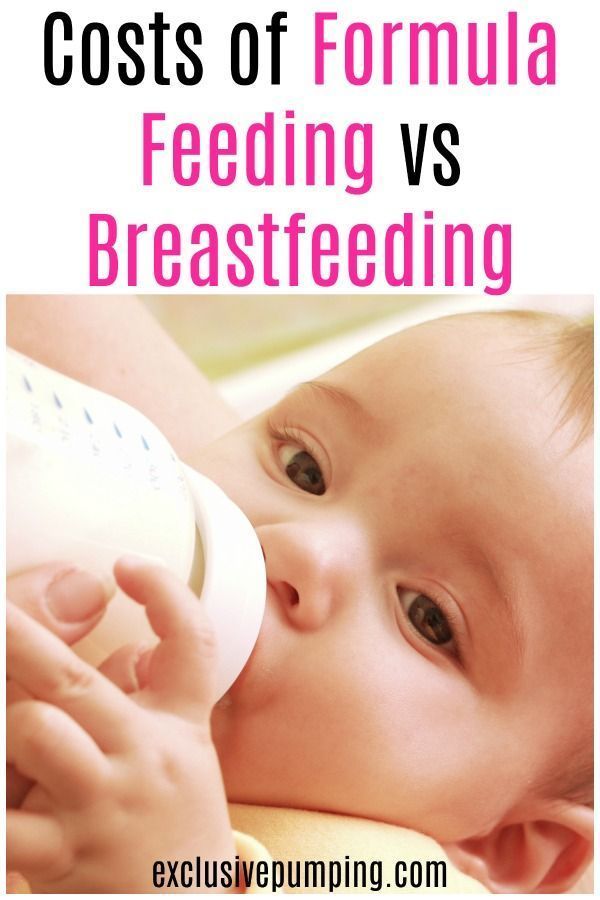 You will know that your oscar fish will recognize you as their owner when they swim faster when you are around. nine0005
You will know that your oscar fish will recognize you as their owner when they swim faster when you are around. nine0005
Do the Oscars like plants?
Oscars don't usually eat live plants - the problem with Oscars is that they tend to infiltrate the substrate in their tank, which can damage plant roots. Oscars tend to rearrange their tanks a lot, moving decorations around and digging into the substrate.
How can I eat my Oscar?
Try Live Food Even after 24-48 hours, if your new Oscar is not eating, try feeding him live food. You can feed it with forage fish such as guppies, shrimp and bloodworms. Oscar fish love live food, so they usually start eating live food right away. nine0005
How long can an Oscar fish live out of water?
They can suffocate and die quickly without water (after three to four minutes of not moving their gills), so it's important that you don't remove them unless the new water is ready to carry them.
What decor do the Oscars like?
Another good decoration is large river stones.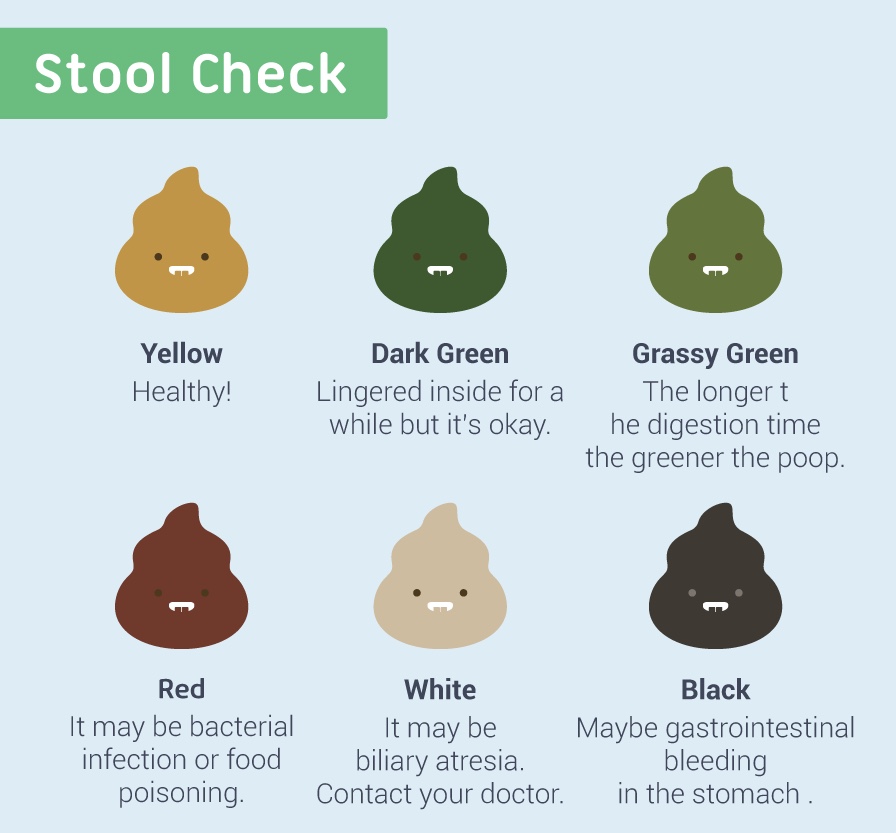 They tend to be smooth, so oscars are unlikely to injure themselves if they bump into the stone. They also give the aquarium a more natural look. Finally, every aquarium with cichlids laying eggs should have at least one piece of slate. nine0005
They tend to be smooth, so oscars are unlikely to injure themselves if they bump into the stone. They also give the aquarium a more natural look. Finally, every aquarium with cichlids laying eggs should have at least one piece of slate. nine0005
What size tank do I need for 5 Oscars?
Ultimately, an adult Oscar fish requires a large aquarium. So ideally, you should keep Oscar in a large tank of at least 55 gallons. The bigger, the better! You can keep 4-5 juvenile Oscars in a small 30 gallon tank.
Is my Oscar happy?
The fact is that Oscar fish are quite capricious fish, and when they don't like something in the aquarium, they stay in one place without moving. This behavior can also make you think your Oscar is dead. Oscar fish usually pout when they notice any change in their tank and they don't like it. nine0005
Breakfast for an excellent student: how to feed today's schoolchildren
Gazeta.Ru talked to nutritionist Marina Kopytko about how to properly feed a child, whether it is worth fighting for every spoonful of borscht, banning fast food and eating sweets in front of children.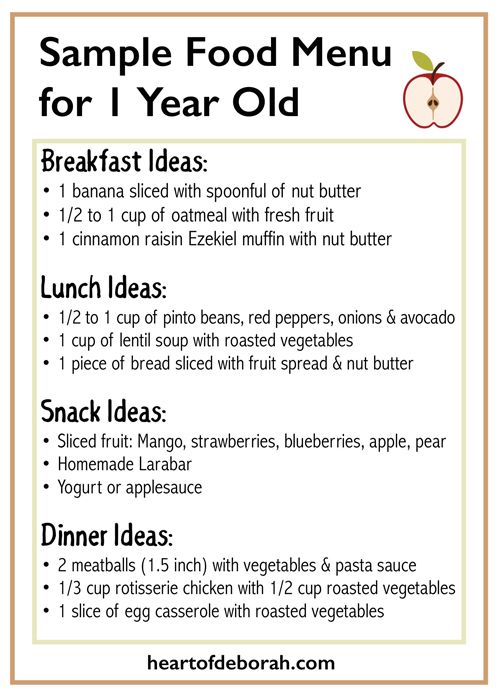
Feeding a child is a whole problem. Children love fast food too much, despise vegetables and hate when they are forced to eat soup, while adults are ready to fight to the last for every spoonful of borscht: “And until you finish eating, you won’t leave the table!” What is the reason for these contradictions, how to convince a child to eat fully and correctly, and what vitamins can not be dispensed with by any schoolchild? "Gazeta.Ru" talked about this with a nutritionist, chief physician of the clinic "Weight Factor" Marina Kopytko. nine0005
— The first thing you want to know about the diet for a student: how much protein, fat, carbohydrates and fiber should you get per day? Are there any rules?
— Yes, the norms of physiological needs are prescribed for people of different categories, including children of different ages. They can be found on the Internet , by heart, of course, no one remembers all grams of proteins, fats and carbohydrates. But I must say that these norms are used to calculate the menu in kindergartens and schools, but it is difficult to apply them in life. In practice, you need to rely on the principles of forming a menu for a student, which will give him enough nutrients to physically grow normally, develop intellectually, and cope with school workloads. nine0005
In practice, you need to rely on the principles of forming a menu for a student, which will give him enough nutrients to physically grow normally, develop intellectually, and cope with school workloads. nine0005
— What are these principles?
- One of the most important is diet. The child should have three standard meals - breakfast, lunch, dinner - and one or two additional ones, depending on the length of the day. If a child goes to bed at nine o'clock in the evening, he can do without an afternoon snack, and if he goes to bed at ten or eleven, then he will not do. You also need to clarify how the child eats at school: if, in addition to breakfast, the school provides additional food - a fruit or a glass of milk - then you don’t need to give anything with you, but if there is nothing like that, you need to think about a healthy snack. nine0005
When scheduling the breakfast-lunch-dinner schedule, you can also indicate the approximate time: it is desirable that the last meal be two to three hours before bedtime. If the child has weight problems, the recommendations will be different, it is best to visit a doctor. Another important principle is diversity. It is necessary to make sure that all food groups are present in the student’s diet: proteins (meat, fish, chicken, seafood, cottage cheese), cereals (pasta, cereals, that is, everything that gives energy), vegetables (this is fiber, vitamins, organic water ), fruits (vitamins, organic water), dairy products (calcium), fats. nine0005
If the child has weight problems, the recommendations will be different, it is best to visit a doctor. Another important principle is diversity. It is necessary to make sure that all food groups are present in the student’s diet: proteins (meat, fish, chicken, seafood, cottage cheese), cereals (pasta, cereals, that is, everything that gives energy), vegetables (this is fiber, vitamins, organic water ), fruits (vitamins, organic water), dairy products (calcium), fats. nine0005
— What group do sweets belong to?
- This is a separate group. It is advisable to give sweets somewhere around 16.00. By this time, the child, as a rule, is tired, and he still needs to live almost half a day, so at this moment some kind of semi-sweet afternoon snack will be just right.
It can be fruit, sweet yogurt, some kind of pastry - something that will give energy for the second half of the day, when you need to do homework and do other things.
- What to do with sweets and other sweet desserts? Can't they just be given away?
— If the child does not have a weight problem, any sweets can be given. The only trick is not to do it on an empty stomach. At the end of lunch, with an afternoon snack - yes, but as an independent meal - by no means. A typical mistake many parents make is to give their child access to food all the time. In this case, the child endlessly eats fruits, bagels, chocolates, nuts - everything that is poured into a vase and stands in a conspicuous place. Of course, he won't eat any soup at lunchtime. nine0005
The only trick is not to do it on an empty stomach. At the end of lunch, with an afternoon snack - yes, but as an independent meal - by no means. A typical mistake many parents make is to give their child access to food all the time. In this case, the child endlessly eats fruits, bagels, chocolates, nuts - everything that is poured into a vase and stands in a conspicuous place. Of course, he won't eat any soup at lunchtime. nine0005
- By the way, not everyone likes soup. Does it have to be eaten?
- Previously it was considered necessary, now it is not. There is no need to force children. If at least two or three times a week he eats soup, this is normal. It is more important that the child eat a full-fledged second course for lunch, that is, a side dish and meat or a piece of fish.
And the soup… It will fill the volume of the stomach, but whether it will give protein and vitamins is not yet a fact.
— And what about those children who have no appetite? nine0096
— You have to adapt to them, offer them only the second course. .. Actually, it's very rare that a child doesn't really have an appetite. This usually means that the child is sick. And here it is very important not to force him with food: at this moment he does not need food. But a healthy child always wants to eat.
.. Actually, it's very rare that a child doesn't really have an appetite. This usually means that the child is sick. And here it is very important not to force him with food: at this moment he does not need food. But a healthy child always wants to eat.
— I don’t know, many people eat with such scandals…
— So, we need to figure it out. For example, it may turn out that the child has a snack between main meals and when the family sits down for dinner, he is simply not hungry. He ate some dried fruit, and that's enough for him. I drank a glass of juice, and it gives him energy for two hours. And it seems to adults that he does not eat anything. nine0143 (Makes big eyes, parodying horror. ) It happens that a child is not interested in food at all.
Then you can involve him in the process of cooking, instruct him to do what he can according to his age. Throw raisins or dried apricots into the porridge, peel the potatoes, mix the salad. So he has an interest in food.
- How to deal with all sorts of sweet soda and chips?
— There is no need to fight frankly. Children watch each other, and even if the family does not eat chips and drink soda, they are interested in trying it, because classmates eat it. So if this is not a product of daily consumption in the family, there is no need to panic. Moreover, it is better to introduce the child to fast food. The topic of chips and other junk food should not somehow stand out, it should be discussed routinely. nine0005
You go to the store, planning your purchases - from time to time include chips in the list and explain that you will eat them together after dinner when you watch a cartoon.
Do not focus on chips, and the child will treat them calmly.
- But when a child asks for chips, how can he tell that they are harmful?
- If he screams and demands, this is a bad sign - it means that something is broken in communication with parents and you need to contact a psychologist. Much more often it turns out that the position of mom and dad on this issue is different. And if on the street mom and dad are already starting to argue: “I will buy”, “But I will not buy”, the child has a mismatch. If you want to explain that eating chips is bad, it's best to say: "I would not want you to eat chips, because they contain a lot of salt, they have a lot of preservatives." Or even easier - to say that the chips will affect the skin, there will be acne: “Do you want your skin to be oily? Eat. Do not want? Do not eat". You have to give a choice. nine0005
Much more often it turns out that the position of mom and dad on this issue is different. And if on the street mom and dad are already starting to argue: “I will buy”, “But I will not buy”, the child has a mismatch. If you want to explain that eating chips is bad, it's best to say: "I would not want you to eat chips, because they contain a lot of salt, they have a lot of preservatives." Or even easier - to say that the chips will affect the skin, there will be acne: “Do you want your skin to be oily? Eat. Do not want? Do not eat". You have to give a choice. nine0005
— What to do with vegetables if the child does not like them?
— You need to understand if the family likes vegetables. Someone does not have a culture of consumption of this group of products. There are, of course, individual preferences when a child eats only cucumbers and does not eat tomatoes. There is nothing to worry about! Cucumbers are enough. And in order for the child to eat more vegetables, you can put fresh carrots, celery stalks and cherry tomatoes in a beautiful, washed place in a vase and put them in the child’s field of vision. So that he does not pull chocolate voluntarily or involuntarily, but what you want to teach him. nine0005
So that he does not pull chocolate voluntarily or involuntarily, but what you want to teach him. nine0005
— What is the cause of childhood obesity?
Overeating, fast food and physical inactivity. If there are overweight people in the family, the likelihood that the child will have a lot of weight is very high. This is where family food comes in. It's not some terrible heredity, everything is much simpler.
Mom and dad are overweight for a reason, they somehow ate it. Either the portions are large, or the assortment is not the same, or there are too many saturated fats or trans fats.
And the child learns to eat more than he needs, the food is digested, deposited in the form of fats. Fat cells, when there are a lot of them, begin to perform endocrine functions, and it is difficult for a child to lose weight. nine0005
— Is it harder for children to lose weight than adults?
- If the family does not support - yes. It often happens that the doctor recommends losing weight, and the parents continue to eat sweets with the child.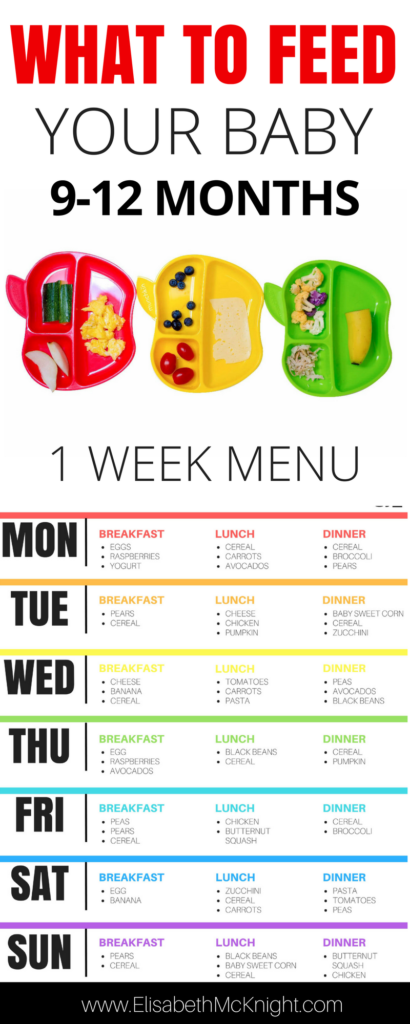 It turns out that they can, but he can't! This causes a sea of indignation. And when there are several children in a family, and one can eat chocolate, and the other can’t, it’s very disappointing. He does not understand that these are related things: you ate a chocolate bar - you got 600 extra calories. How to spend them? You don't run. nine0005
It turns out that they can, but he can't! This causes a sea of indignation. And when there are several children in a family, and one can eat chocolate, and the other can’t, it’s very disappointing. He does not understand that these are related things: you ate a chocolate bar - you got 600 extra calories. How to spend them? You don't run. nine0005
— What vitamins and minerals do schoolchildren need?
Vitamins of the B group - B2 are extremely necessary, it is found in dairy products, and B6 and B12, they are found in meat, in the liver, in nuts. These vitamins are needed for brain activity and for children to be diligent, otherwise hyperactivity syndrome will develop when children cannot sit still in principle. Plus vitamin C, it is responsible for immunity. Most people are deficient. The problem is that it breaks down very quickly, and even if you ate blueberries and currants in the summer, it will still fall apart by the fall, so there is something that contains vitamin C, you need every day. nine0005
nine0005
You can talk about microelements for a very long time, but if we talk about what is needed for mental activity and memory, then these are magnesium, selenium, zinc, copper, iodine. Residents of megacities especially lack iodine, so iodized salt has to be used.
— What about phosphorus? As a child, I was told to eat fish, because it contains phosphorus, and it is needed for the brain.
— For the brain? No, phosphorus and calcium, together they strengthen bone tissue. Well, that's also right, because the child grows quite intensively. If the bones do not keep up with the internal organs, people usually slouch, pulling their heads into their shoulders. nine0005
— Do I need to take vitamins in the form of supplements?
— Yes, throughout the year. But periodically it is recommended to change the vitamin form so that there is no addiction.
It is better to take vitamin complexes: they should be suitable for the age of the child, and it is desirable that they contain at least six vitamins and at least two or three trace elements.

